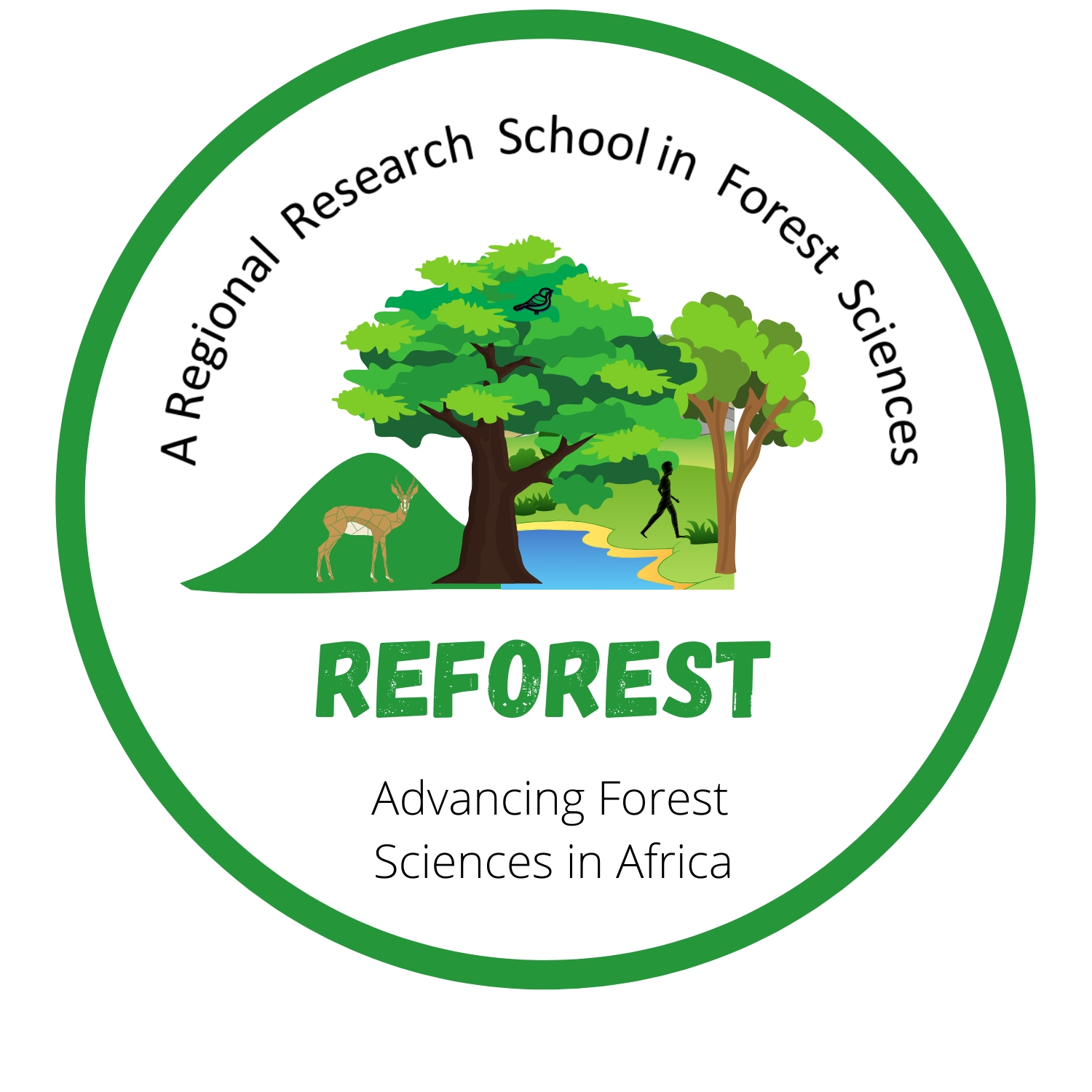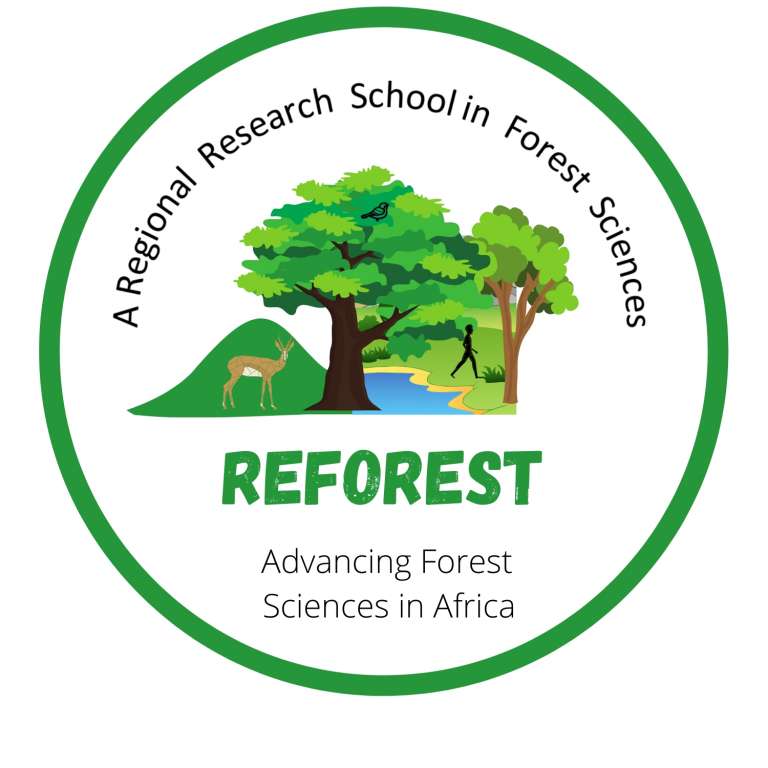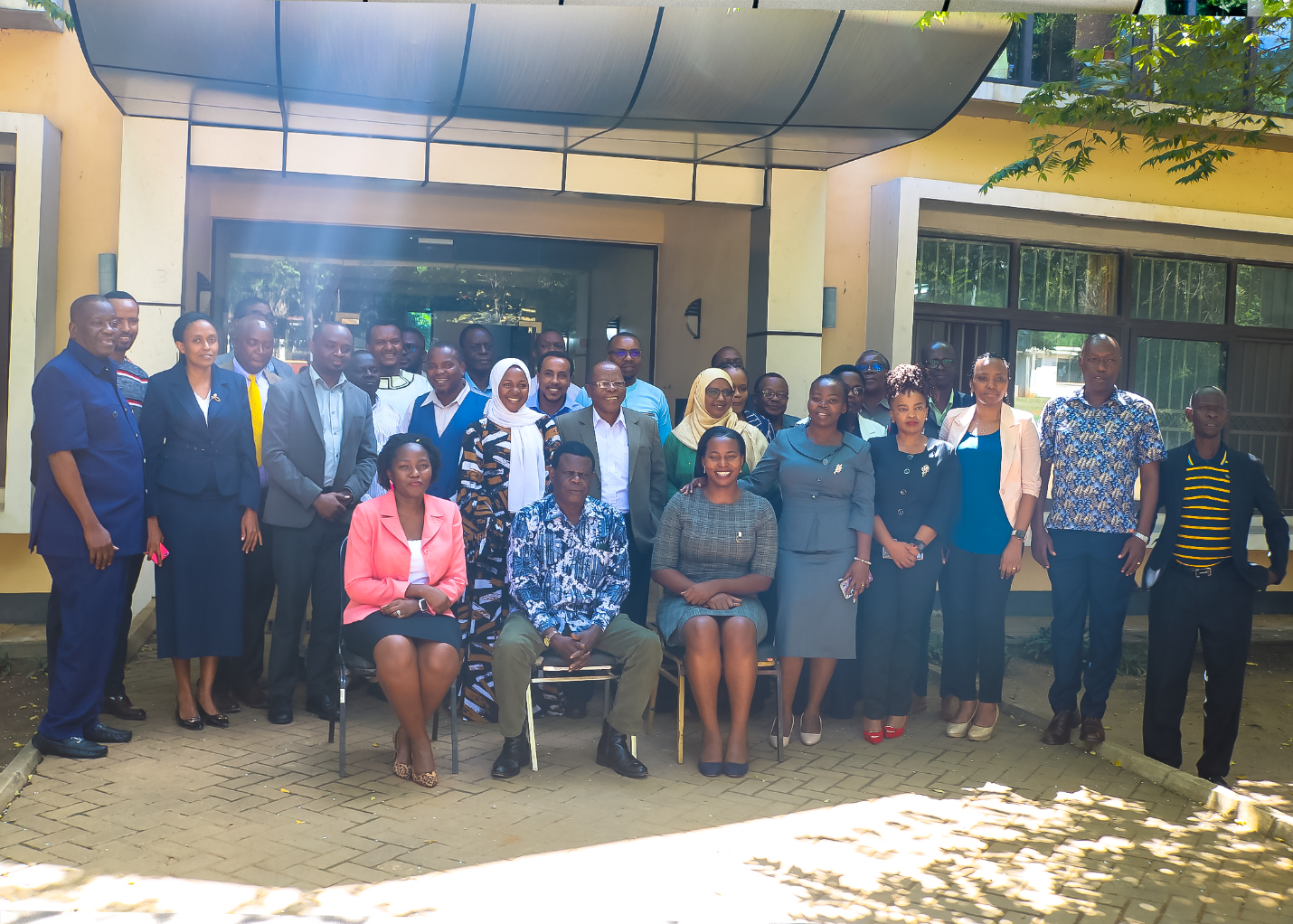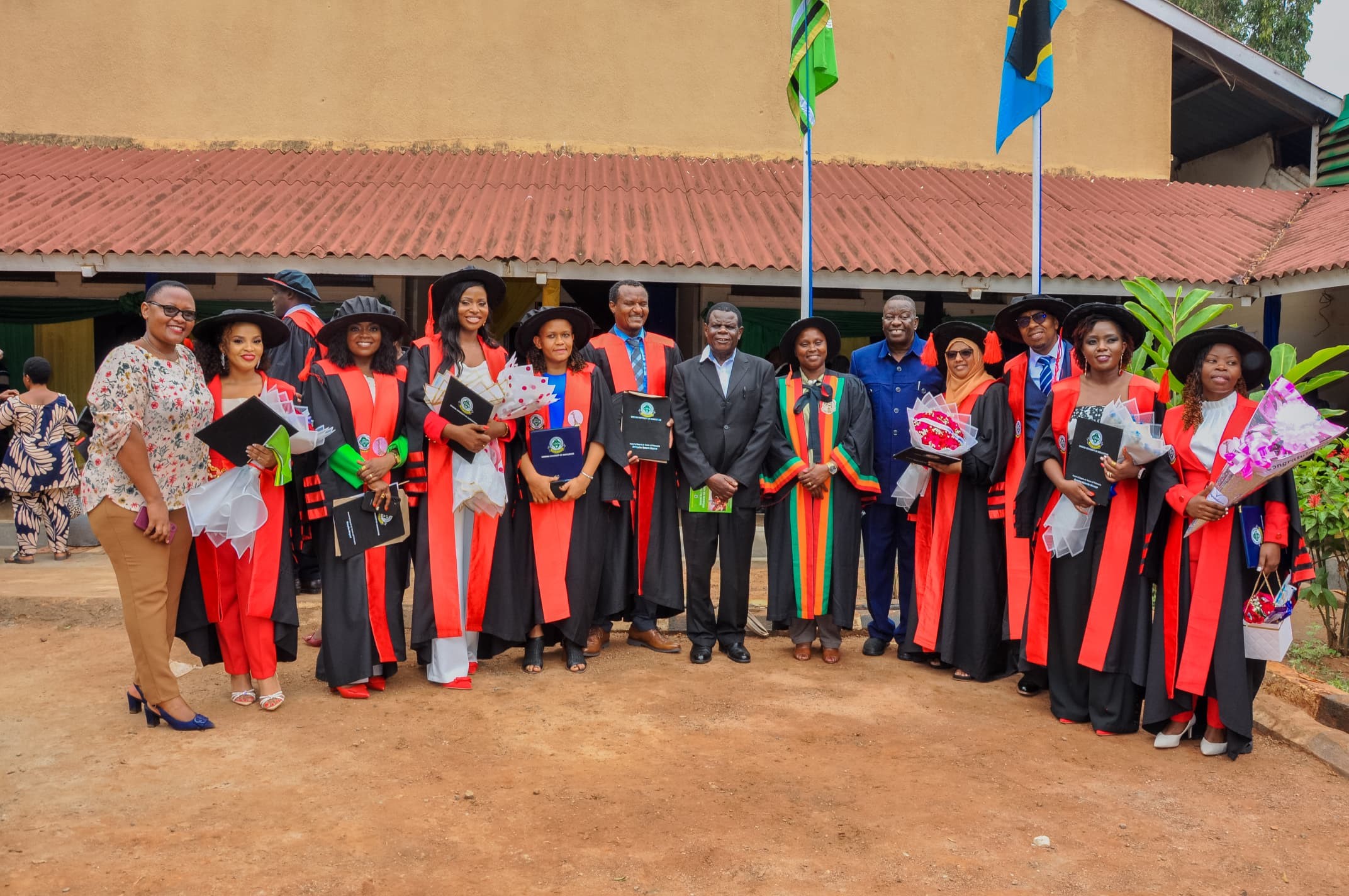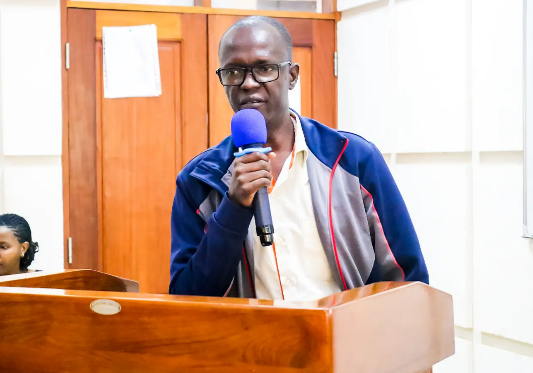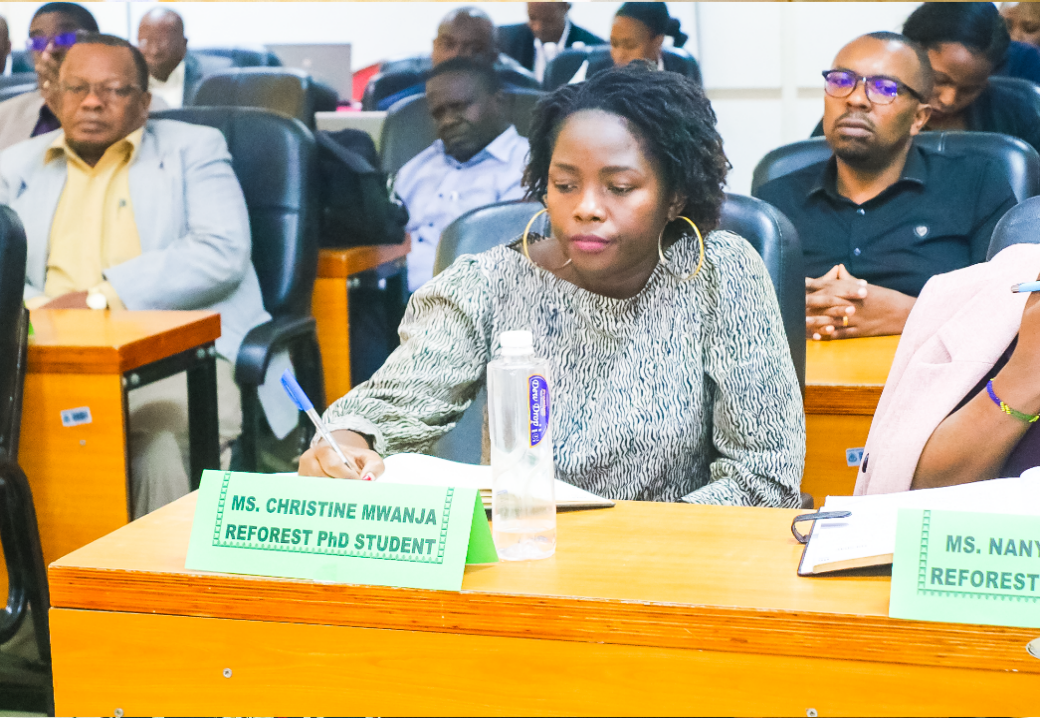REFOREST students, their lecturers and Sauti Moja Village leaders during an excursion in Southern Tanzania (Photo credit: Alberto Manhica)
In Tanzania, the forests are classified and managed under the following arrangement i.e. forests managed by the central government (16,610,581 ha), local government (3,107,351 ha), Village committes (21,975,094 ha), and privately managed (3,515,889 ha) (URT, 2015). Currently, 2,881,785 ha of forests and woodlands do not have proper designated ownership or management arrangement. In a bid to promote sustainable management of village land forest reserves, government of Tanzania undertook reforms in forestry sector in 1998 to pave way for community involvement in forest management. The forest act of 2002 formalized inclusive governance in forest management, commonly known as Participatory Forest Management (PFM). PFM is forest management arrangement whereby local communities collaborate with either the Central Government or Local Government to sustainably manage forests. However, the forest act created another avenue for local communities to solely manage their village land forest reserves under the forest management approach termed as “Community-Based Forest Managemen (CBFM)”. CBFM covers approximately 2,4 million ha of forests and woodlands distributed within 1,233 villages meanwhile Joint Forest Management (JFM) covers 5.4 million ha in 1,052 villages only.
Sokoine University of Agriculture, through the REFOREST Programme organized a field excursion, which took place from 26th – 30th August, 2021. The purpose of the excursion was to expose the Reforest PhD students to CBFM and how the Markets for Poor (M4P) approach is used to address challenges in forest wood markets in Tanzania.
REFOREST PhD Students together with the instructors visited two village communities in Nanjilinji and SautiMoja managing their Village Local Forest Reserves (VLFRs) under the CBFM arrangement . These 2 villages are among the 17 villages with a total acreage of 228,017 ha that have secured cerficate of good forest management practices from the Forest Stewardship Council (FSC) pioneered by Mpingo Conservation Development and Initiative (MCDI). MCDI is a non-governmental organization founded in 2004 and is based in Kilwa Masoko, Lindi Region- southern Tanzania. The NGO has done tremendous work in the following areas:
1) Capacity building and technical support in improving forest management for sustainable supply of ecosystem services.
2) Initiating the certification processes and management of the whole FSC arrangement for all the villages involved.
3) Linking CBFM forest products i.e. round wood and sawn timber to accredited buyers at premium prices.
Before the intervention of MCDI in promoting sustainable harvesting of timber using modern sawmills with recovery of 60%, local communities were using traditional harvesting technologies with very low recovery of timber i.e. pit sawing (27%) and Ding Dong (35%) which led to a lot of wastes and low revenue. Currently, MCDI purchased 4 modern sawmills with financial support from World Wide Fund for nature-Sweden, FORVAC program in Tanzania, Addax and Orxy. The sawmills are distributed to 4 districts (Kilwa, Tunduru, Songea, Ruangwa) in southern Tanzania to help promote sustainable harvesting of timber. The sawmills are stationed at the District Council Headquarters of those respective districts. Below is one of the sawmills stationed at Kilwa District Council Headquarters in Lindi region;
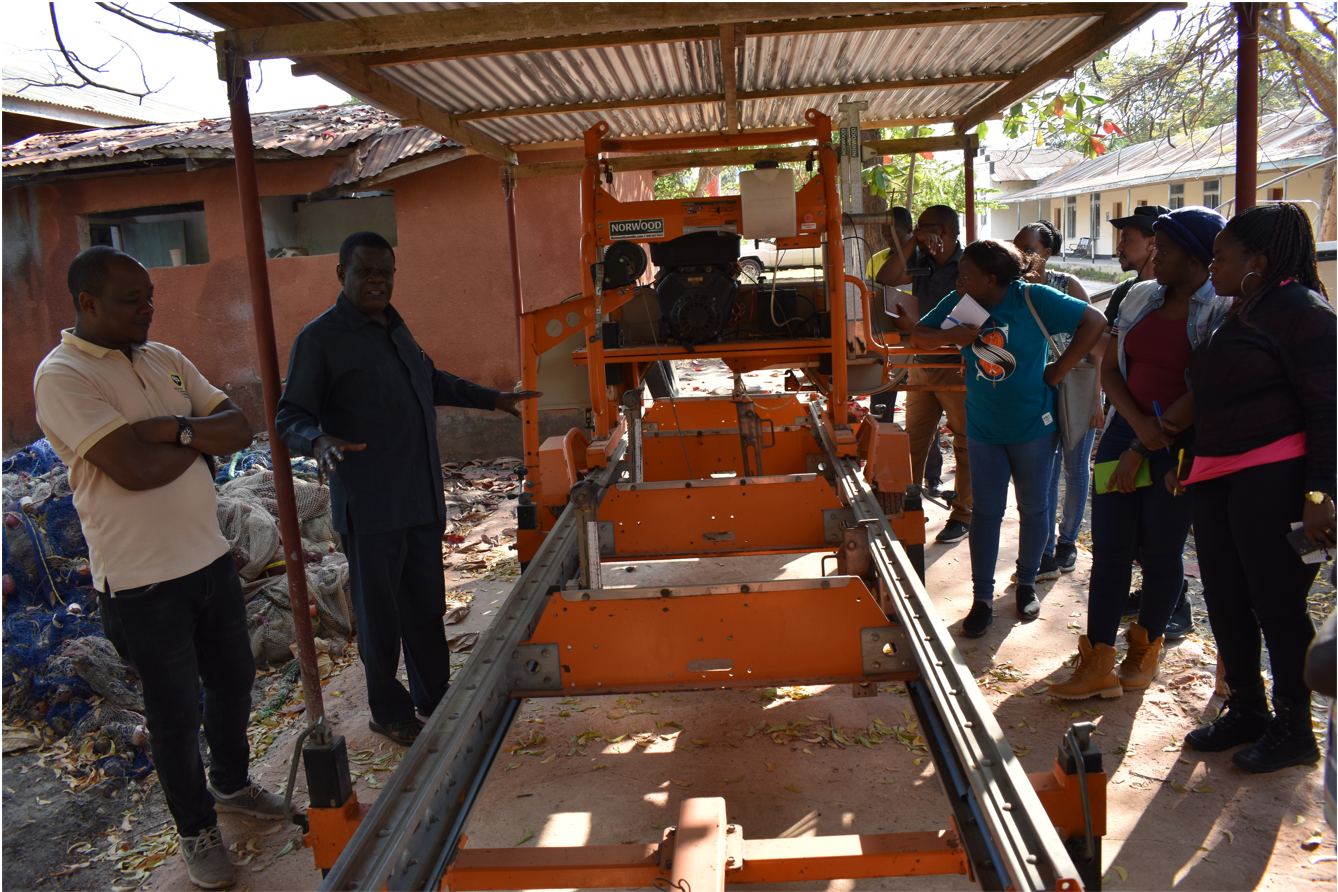
Mobile Sawmill for one of the villages bought by MCDI (photo by Alberto Manhica)
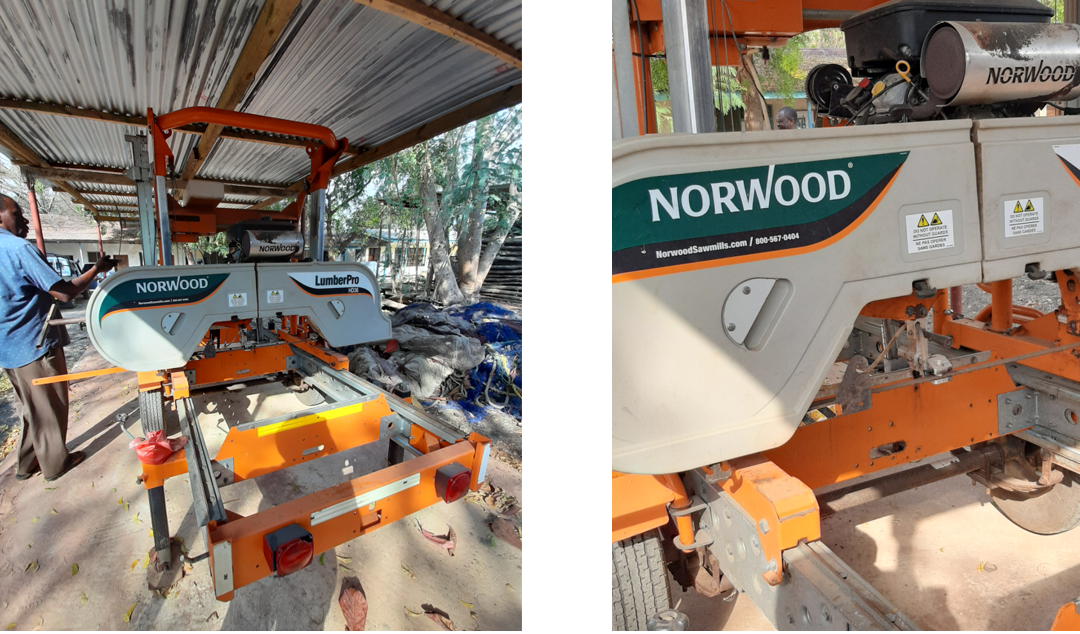
Band saw mobile mill bought by MCDI (photo by Christine Mwanja)
All the villages under the CBFM benefit from utilizing the sawmills. MCDI has trained and certified sawmill operators for each village. Accessing the sawmills is based on well documented procedures taking into consideration the forest harvesting and business plans for each VLFR. Communities and Village Natural Resources Committees (VNRC) have been trained by MCDI on timber processing (harvesting, drying, grading, and marketing) to help enhance timber product quality and marketability.
Under the CBFM arrangement, all the accrued revenue from sales of round wood and sawn timber is distributed as follow; 50% for community development projects, 10% for technical support from the District Council, and 40% for implementing forest management activities such as forest patrols, fire protection, logging supervision, awareness creation, forest quality assessment, supervision of certification and other administrative costs.
Experiences of village communities with CBFM and forest certification
1. Nanjilinji A, Kilwa District, Lindi Region
Nanjilinji A village has a population of 3,303 people with gazetted Village Land Forest Reserve areas of 64,677 ha in Mbumbila A and 18,987 ha Mbumbila B. These 2 VLFRs are managed based on approved forest management plans under the FSC certification scheme which started in the year 2012. It was reported that, CBFM in Nanjilinji benefitted from the sales of certified wood products fees from tourists, researchers, and fines obtained from auctioning impounded illegally harvested timber. Due to increased revenues, the village government-supported community development activities such as building a primary school, purchasing furniture for the primary school, constructing toilets and water wells, supporting pregnant women, and building a police station. The village government also finances forest management activities such as giving special allowance to the CBFM committee, fire-line maintenance, early burning, patrolling the forest, and purchasing and maintaining patrolling equipment such as motorcycles. However, the village is facing some challenges, including an unreliable market of forest products, shifting cultivation from farmers growing sim-sim, illegal harvesting of valuable timber tree species. Below are the pictorials taken during the field visit;
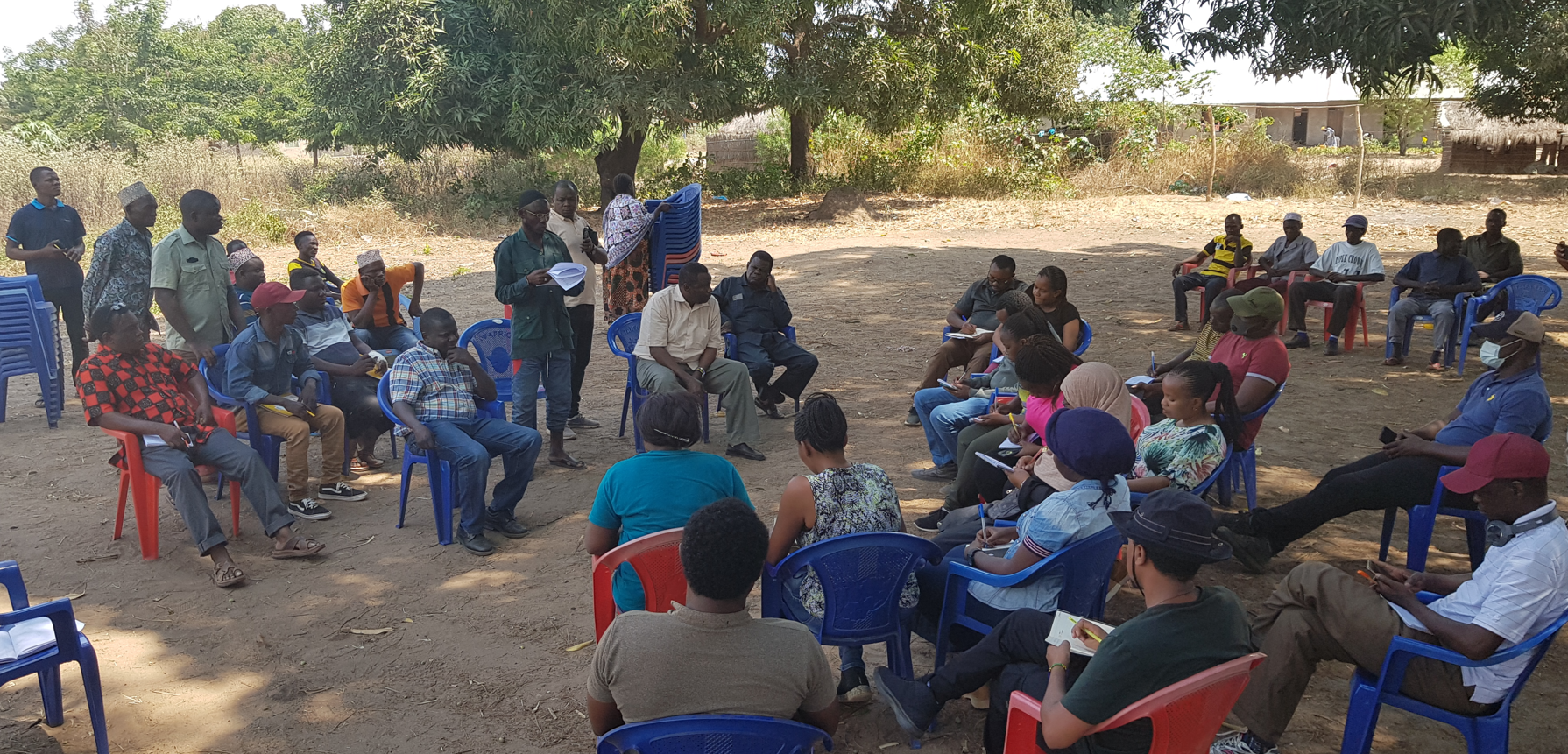
Mr. Said Stanley Bakari, Chairman VNRC, addressing students on the benefits obtained from Community Based Forest Management. (photo by Alberto Manhica)
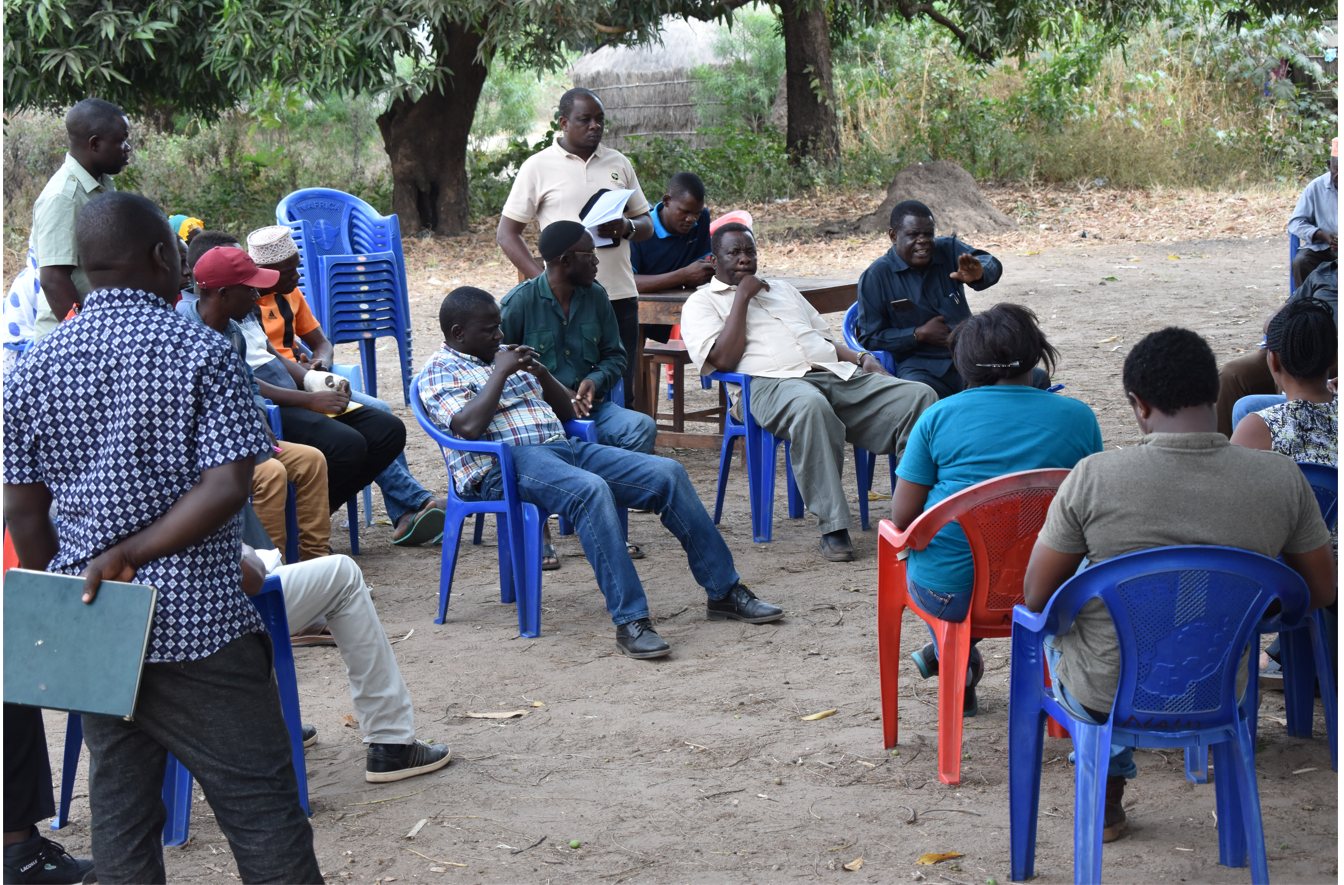
Meeting with the VNRC members at Nanjilinji A village (photo by Alberto Manhica)
2. SautiMoja Village in Tunduru district, Ruvuma region
The village has a forest reserve called Chihuruka, with an acreage of 21,966 ha. Similar to Nanjilinji A, the village forest is certified under the FSC certification scheme. The village receives revenue from sales of logs of Pterocarpus angolensis, Afzelia quanzensis. Moreover, it sells bamboo, and fines confiscated illegal logs and timber. This revenue generated is used by the village government to support community development activities, such as building classrooms for primary schools, electrifying village offices, and provision of stationery for the primary schools. Other forest management activities supported include early burning, fire-line maintenance, patrolling, and purchasing patrolling equipment such as motorcycles. In addition, MCDI supported the VNRC with a mobile sawmill to increase access to markets to add value to the logs harvested from the forest and sell them as timber instead of logs. The sale of timber instead of logs doubled the revenue generated from the forest.
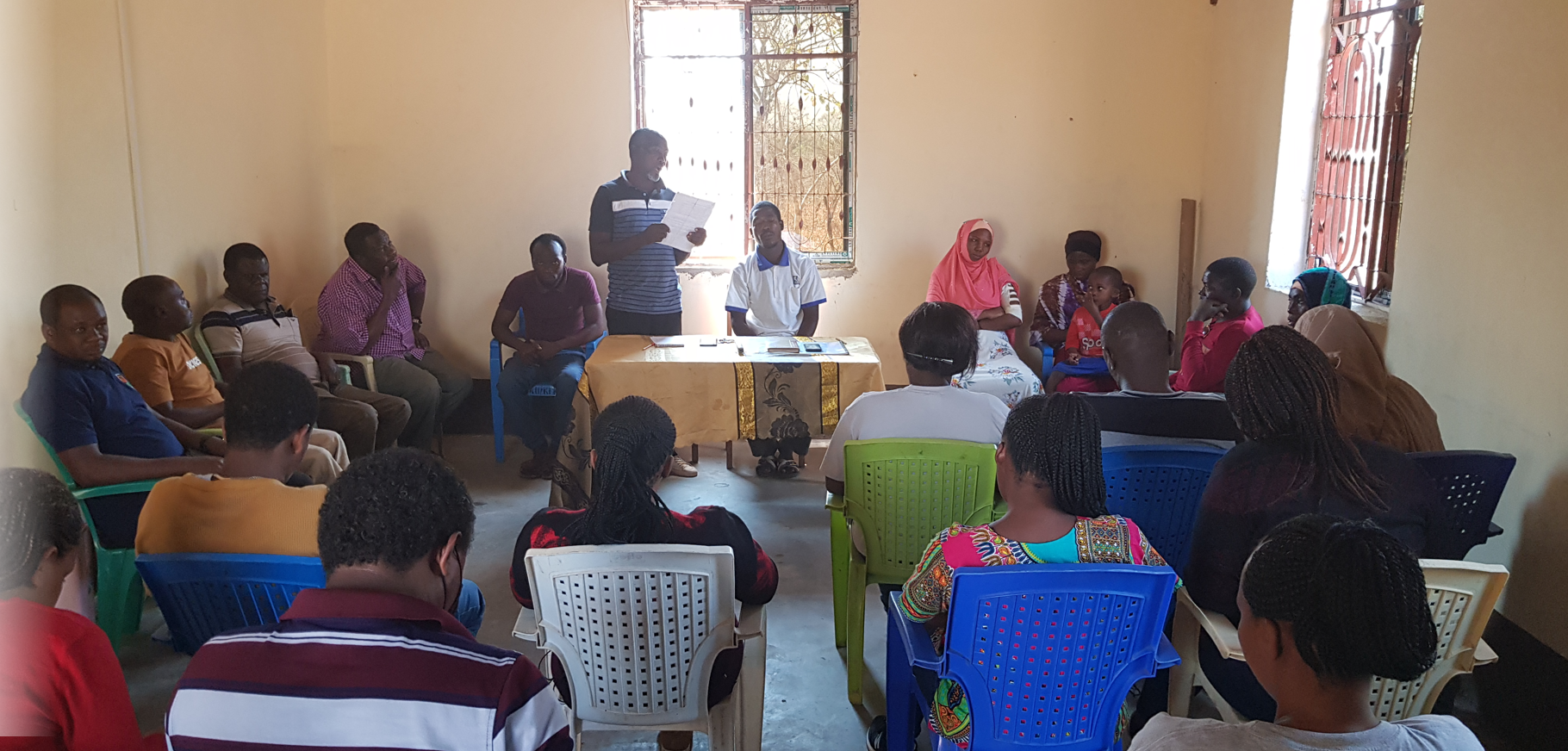
Mr. Philimon Dastan Hassan, Village Executive Officer, and members of VNRC addressing students on the benefits obtained from Community Based Forest Management (photo by Siwa Nkya)
Other benefits to the Sautimoja Village members included: increased awareness on the importance of CBFM, provision of customary title deeds to village members due to good management of the forest reserve, and development of NTFPs from Amarula tree for cosmetics and food.
Lessons Learned
Community based forest management can contribute to sustainable livelihoods of the poor and marginalized adjacent forest communities. Based on the observations from the two villages, the village natural resource committees practiced inclusive governance with the local people managing the forest activities with support from various stakeholders, including MCDI, WWF, and Sida, who provided financial and technical support. They also clearly demonstrated that the fair benefit sharing of the forest can ensure equity among the various stakeholders. MCDI also successfully demonstrated that the Market for Poor (M4P) approach can increase access to markets for forest products while sustainably managing the forest resources.
Despite the benefits of FSC certification and modern mobile sawmills in increasing revenues for communities under CBFM in Southern Tanzania, the quantity of timber produced is low. The communities are selling round logs of a few species – Pterocarpus angolensis, and Afzelia quanzensis due to few existing buyers of certified timber but also the existing ordinary is majorly dominated by illegally harvested timber.
Recommendations
1. The communities need to be equipped with entrepreneurship skills to add value to the timber by producing furniture to increase the range of marketable products.
2. Research institutions/universities should collaborate to assess the suitability of other tree species to increase the range of harvestable commercial timber tree species especially the lesser-known timber tree species for different uses.
Prepared by REFOREST Programme Students
